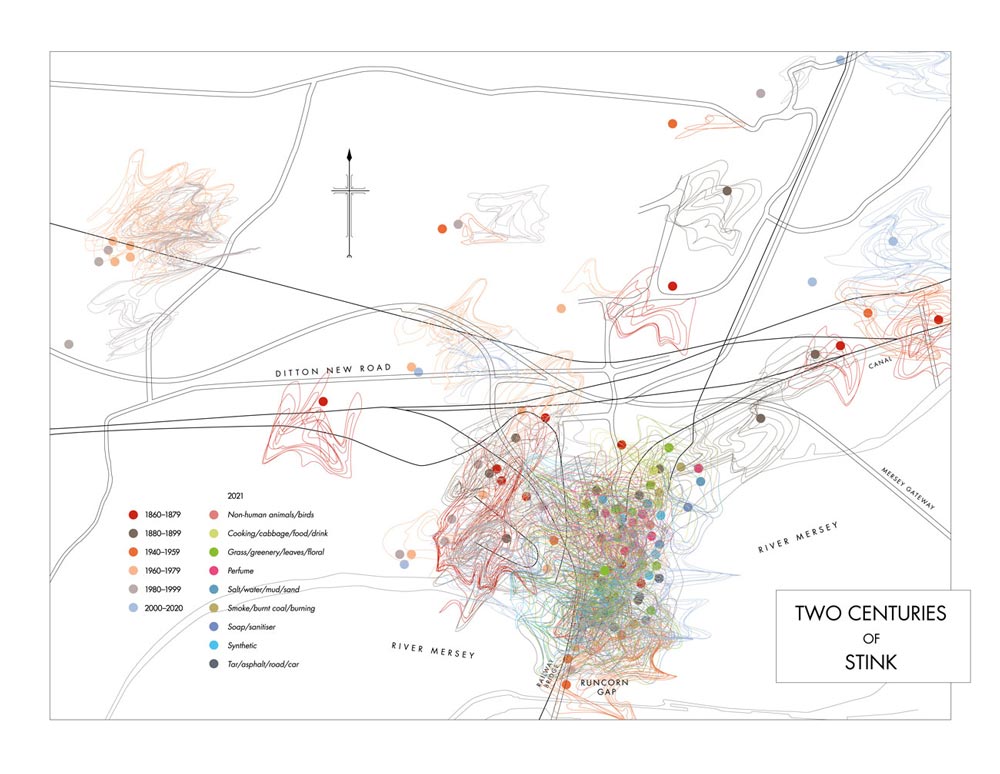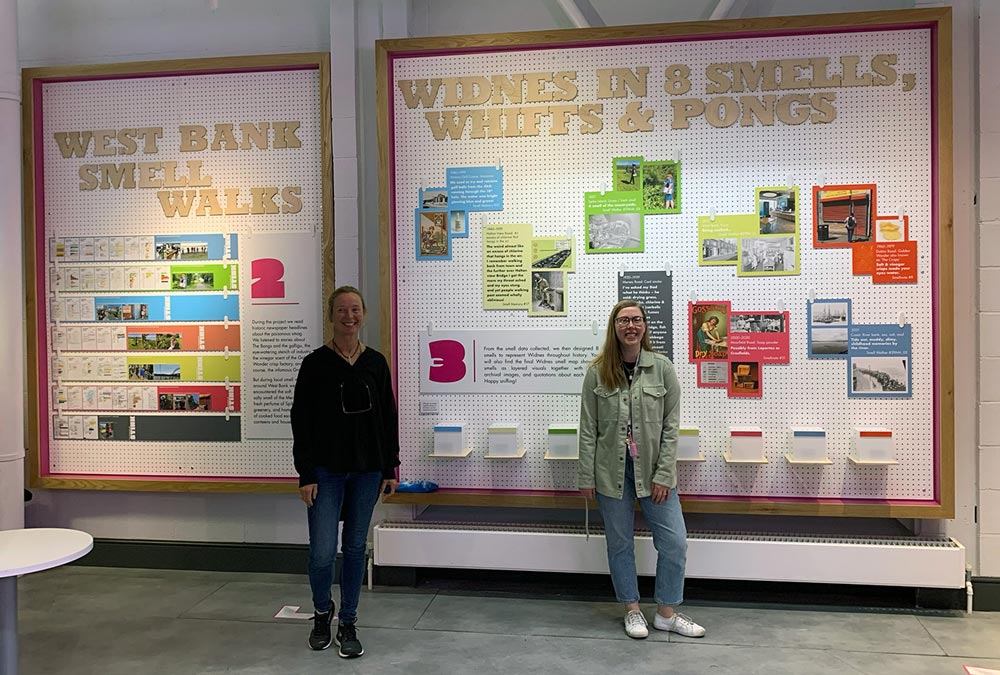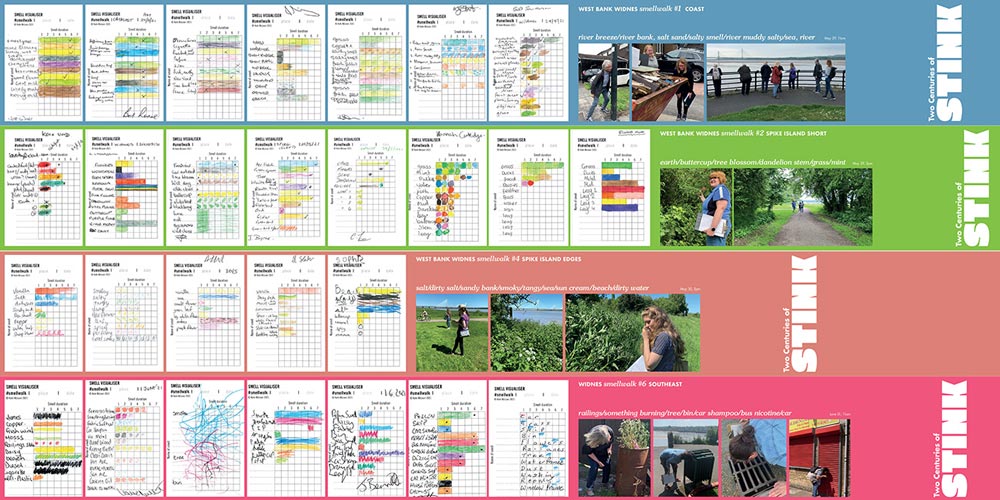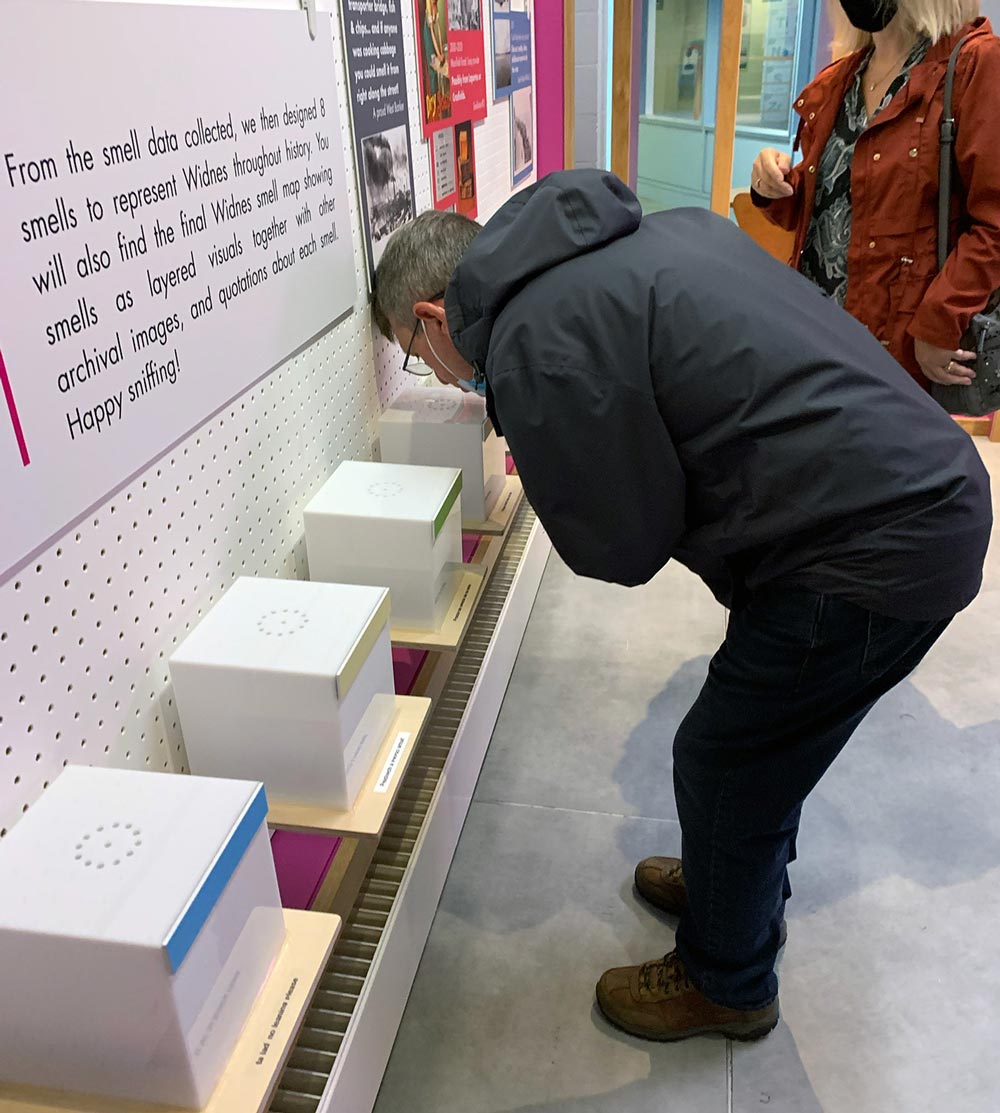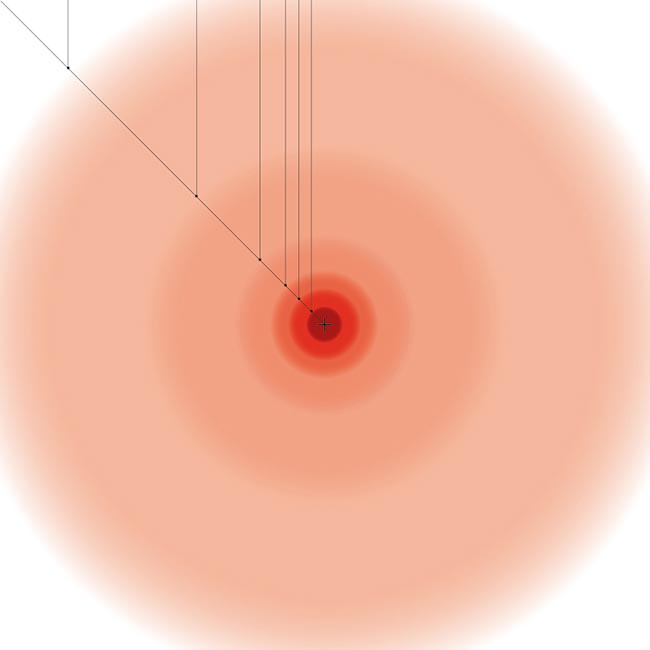37: Two Centuries of Stink: Widnes
Widnes’ industrial heritage had harsh implications for the local population of workers and their families; “dingy streets of hastily constructed houses, with works that were belching forth volumes of the most deleterious gases and clouds of black smoke from chimneys of inadequate height… The air reeked with gas…and small and large heaps of stinking refuse began to accumulate… The homes had no proper sewerage and industrial disease and injury were rampant.” (Kirby, 2020 and Harmonious-Enterpreneurship.org)
The mapping process revealed an olfactory palimpsest whereby notable smells recurred over different time periods in the town, despite their sources being different. The smells were presented for sniffing, and using imagery from the collection’s archive. But what were they? The smells of Widnes are as follows: ammonia, chlorine, food being cooked, Spike Island grass/fresh, coal smoke, vinegar, soap powder, and river bank with sea, salt and mud.
The multi sensory exhibition of visuals, text and smell/scent recreation was designed to bring historical odours (pleasant and foul, toxic and restorative) to life. The idea of “olfactory palimpsest”, where the past is smellable and any attempts at erasure are imperfect, helps give a framework to how the smellscape is perceived over time.
Date: 2019-2021
- Category: Funded Research, UK
Media & size: Digital print, 1089mm x 841mm plus forthcoming animation
Exhibited:
2021 – Catalyst Museum, Widnes, UK curated by Dr Jade French
Commissioned by:
Catalyst Museum https://www.catalyst.org.uk/what-does-widnes-really-smell-like/
Permanent Collection:
Catalyst Museum
